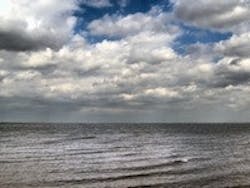Great Lakes Restoration Initiative Provides Funding to Target Harmful Algal Blooms in Lake Erie
U.S. Environmental Protection Agency (EPA) Administrator Gina McCarthy announced that the Great Lakes Restoration Initiative (GLRI) will provide almost $12 million to federal and state agencies to protect public health by targeting harmful algal blooms (HABs) in western Lake Erie. The funding builds upon the GLRI’s ongoing efforts to reduce algal blooms and will be made available to Ohio, Michigan and Indiana state agencies and to the U.S. Geological Survey, the USDA Natural Resources Conservation Service and the National Oceanic and Atmospheric Administration.
“The importance of clean water cannot be overstated, which is why the Great Lakes Restoration Initiative is taking further action to target harmful algal blooms in western Lake Erie,” McCarthy said. “This important funding will address the immediate need for state and federal agencies to protect public health and build upon on-going efforts to reduce harmful algal blooms.”
The new fiscal year 2014 funding will be used to:
- · Expand monitoring and forecasting to help drinking water treatment plant operators and beach managers minimize health impacts associated with HABs;
- · Increase incentives for farmers in western Lake Erie watersheds to reduce phosphorus runoff that contributes to HABs; and
- · Improve measurement of phosphorus loads in Lake Erie tributaries.
In early August, the City of Toledo issued a "Do Not Drink" order for almost 500,000 people in northwest Ohio and southeast Michigan when a drinking water treatment plant was adversely impacted by microcystin, a toxin produced in connection with HAB outbreaks on Lake Erie. In addition to generating toxins that pose risks to human health, HABs create low oxygen "dead zones" and harm shoreline economies.
On Aug. 13, 2014, EPA Regional Administrator Susan Hedman, convened a meeting of federal and state agencies to identify opportunities for collaboration to minimize HAB-related risks in the western Lake Erie Basin. GLRI funding announced today targets immediate needs identified during that meeting. The group will continue to focus resources on this issue in fiscal year 2015 and beyond.
McCarthy, who chairs the Great Lakes Interagency Task Force, which oversees the Great Lakes Restoration Initiative, made the announcement at the task force meeting in Washington, D.C.
The Great Lakes Restoration Initiative was launched in 2010 to accelerate efforts to protect and restore the largest system of fresh surface water in the world. GLRI resources are used to strategically target the biggest threats to the Great Lakes ecosystem and to accelerate progress toward long term goals which includes eliminating harmful algal blooms. Under the initial GLRI Action Plan, GLRI resources doubled the acreage enrolled in agricultural conservation programs in the western Lake Erie, Saginaw Bay and Green Bay watersheds where nutrient runoff contributes to harmful algal blooms. Under the new GLRI Action Plan, which covers 2015 to 2019, projects to reduce nutrient loads from these agricultural watersheds will continue. Watershed management and green infrastructure projects to reduce untreated runoff from urban watersheds will also continue.
Source: EPA
